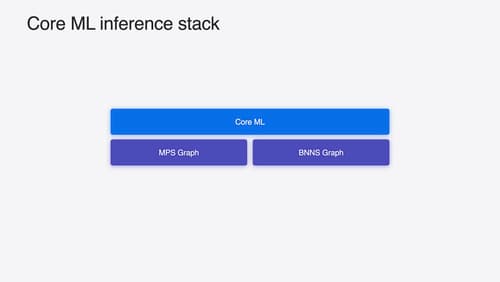how do i run stable diffusion on my mac
Asked on 2024-07-31
1 search
To run Stable Diffusion on your Mac, you can follow these steps as outlined in the WWDC sessions:
-
Model Training and Preparation:
- Training: Utilize Apple Silicon and the unified memory architecture on Mac to train high-performance models using libraries such as PyTorch, TensorFlow, JAX, and MLX. These libraries leverage Metal for efficient training on Apple GPUs.
- Conversion: Convert your trained model to the Core ML format using Core ML tools. This involves optimizing the model for Apple hardware using various compression techniques.
For more details on training and preparing models, you can refer to the session Explore machine learning on Apple platforms.
-
Running Models on Device:
- Core ML Integration: Use Core ML to run your model within your app. Core ML optimizes hardware-accelerated execution across the CPU, GPU, and Neural Engine. This framework is commonly used for running AI models on iOS, iPadOS, and macOS.
- Example: In the session "Deploy machine learning and AI models on-device with Core ML," a demo shows how to use an open-source Stable Diffusion model and modify the diffusers app from Hugging Face to generate images from text.
You can see this in action in the session Deploy machine learning and AI models on-device with Core ML.
-
Optimization:
- Performance Tools: Utilize the performance tools provided by Core ML to further optimize the performance of your model. This includes techniques like quantization and efficient key-value caching in large language models.
For more information on optimizing models, refer to the session Platforms State of the Union.
Relevant Sessions:
- Explore machine learning on Apple platforms
- Deploy machine learning and AI models on-device with Core ML
- Platforms State of the Union
By following these steps, you can effectively run Stable Diffusion on your Mac, leveraging the powerful capabilities of Apple Silicon and Core ML.

Port advanced games to Apple platforms
Discover how simple it can be to reach players on Apple platforms worldwide. We’ll show you how to evaluate your Windows executable on Apple silicon, start your game port with code samples, convert your shader code to Metal, and bring your game to Mac, iPhone, and iPad. Explore enhanced Metal tools that understand HLSL shaders to validate, debug, and profile your ported shaders on Metal.

Explore machine learning on Apple platforms
Get started with an overview of machine learning frameworks on Apple platforms. Whether you’re implementing your first ML model, or an ML expert, we’ll offer guidance to help you select the right framework for your app’s needs.

Deploy machine learning and AI models on-device with Core ML
Learn new ways to optimize speed and memory performance when you convert and run machine learning and AI models through Core ML. We’ll cover new options for model representations, performance insights, execution, and model stitching which can be used together to create compelling and private on-device experiences.
